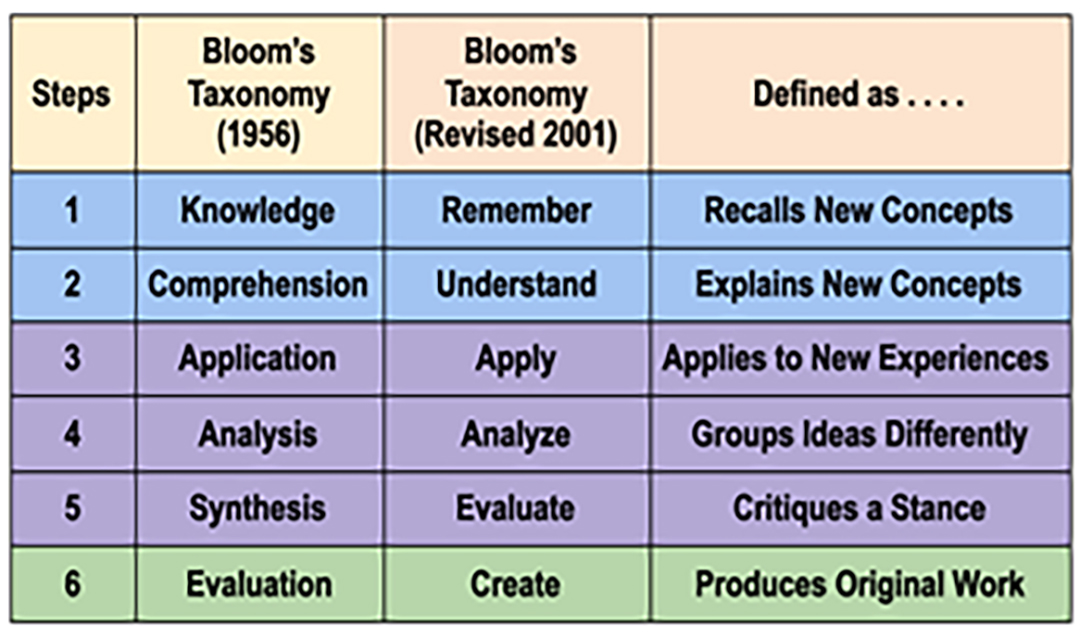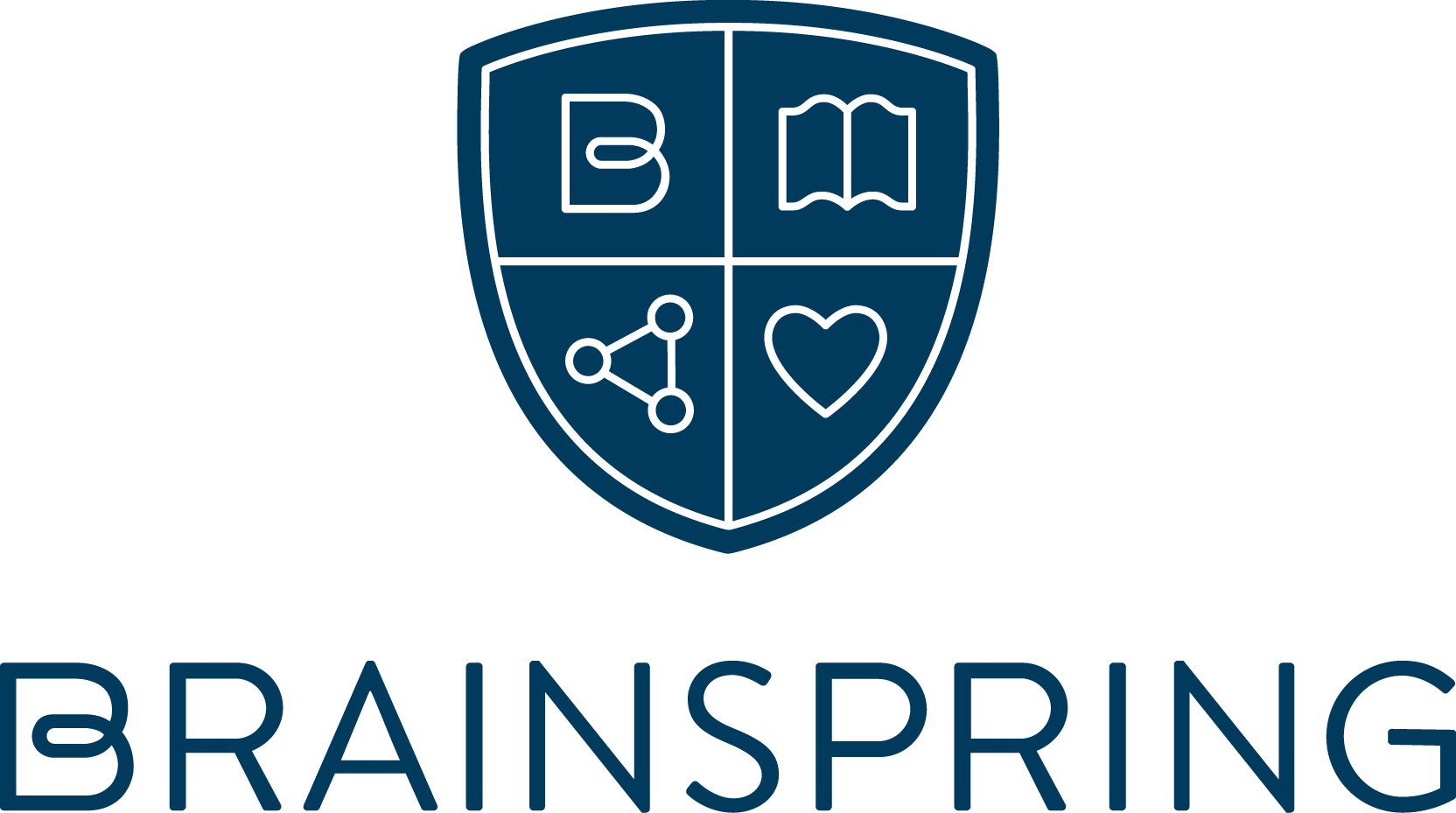Deep Reading Amid A Digital World
Posted by Brainspring on 2nd Dec 2020
Educators have been thrown onto the fast track of digital instruction. During this time, many have reflected on current trends of teaching instruction as well as learning and adapting to new ways of delivery without the ongoing training and necessary technology-based resources. One consistent theme that is on the forefront is the reality that many students are not able to learn on their own, so teaching students how to read actively and analytically is even more challenging.
Even before the pandemic broke out, there was no doubt that our country was in a reading crisis. Dr. Maryanne Wolf’s book Reader, Come Home: The Reading Brain in a Digital World is a worthy read which challenges educators to reevaluate instructional practices. How do we lead this next generation in becoming deep readers, who know the value of reflecting and empathetically connecting to other’s experiences through reading?
Bloom’s Taxonomy and Deep Reading
Most educators have studied Bloom’s Taxonomy, which is the cognitive structure of how learners approach and comprehend new concepts. Bloom’s framework was created to help both students and teachers to clearly understand the learning objectives of a given unit. With these learning goals in mind, the teacher then delivers explicit instruction and valid assessments that align specifically with these objectives.
Though the original Bloom’s Taxonomy was listed as nouns and the revised list has changed to verbs, the way one cognitively approaches and operates with new information has not changed. For the most part, the skills of remembering and understanding are easier to teach; however, in this digital world, the real challenge is how to lead students into becoming what Dr. Maryanne Wolf refers to as “deep readers.” Wolf defines this reading as a cognitive process in which the critical, analytical thinking is being activated, through deep, personal reflection. The results of this evaluative reading process is shown through creativity as well as empathy towards mankind. The similarities between Bloom’s Taxonomy (Steps 3-6) are certainly comparable to Wolf’s definition of deep reading.
Media Impacts Student Creativity
As educators, we know that the critical thinking processes are challenging for our literal learners, but in time, these skills, explicitly taught, can be learned. The question becomes, can we continue to maintain this type of instruction in lieu of the ever changing media influences and distractions on our youth?
According to the 2019 The Common Sense Census: Media Use, tweens (ages 8-12) are spending close to five hours online, and teens (ages 13-18) are consuming over seven hours; this does not even include the time spent on homework. Surprisingly, this media census also revealed that only 2 to 3 percent enjoy reading online or creating their own writing, music, or art, which is step six in Bloom’s Taxonomy: Creating Original Work. It is very apparent that “deep reading,” as Wolf points out, is in jeopardy based on these alarming statistics.
Is it even possible to create a classroom environment where students are learning how to become deep, empathetic readers?
Flipped Learning
Though many claim to have a “flipped classroom” where students are assigned text reading and other supplemental assignments outside of class, Flipped Learning is an instructional approach where the teacher takes on the role of a facilitator. In this student-centered, flexible, interactive environment, the teacher uses direct instruction for small groups and individuals based on student creativity. Unlike the traditional classroom model of Bloom’s Taxonomy, Flipped Learning addresses the higher cognitive skills (applying and analyzing) in the classroom setting whereas the lower levels (remembering and understanding) are completed at home.
Example of Flipped Learning to Promote Deep Reading
The class has been reading a variety of genres, involving the colonial, Puritan times. Students have selected a book to read, based on personal interest and reading level. Some of the choices include Speare’s The Witch of Blackbird Pond, Rinaldi’s A Break with Charity: A Story about the Salem Witch Trials, Duncan’s Hallow’s Hill, and Crane’s graphic novel: Lies in the Dust: A Tale of Remorse from the Salem Witch Trials. The Flipped Learning ideas below, supporting Bloom’s Taxonomy, have been implemented over the course of several weeks.
— —
AT HOME TASKS
Remember: Complete a KWL Chart or schema map on what is currently known about the superstitions of witchcraft during the Puritan times.
Understand: Read or listen to this online source; then, take the quiz. Keep the quiz open and go back to the KWL Chart or schema map and update the information.
IN CLASS TASKS
Apply: In small groups or individually, choose a compare/contrast organizer (Column Venn, Triple Venn, Double Bubble) and compare your new book’s main character to the online source.
Analyze: Individually, choose the antagonist from the new read and complete a graphic organizer on character analysis.
AT HOME TASKS
Evaluate: In your reflection journal, answer this question: Is there such a thing as a good lie? Please state your opinion and use cited evidence from your book to support your view.
Create: Throughout the book, there are life changing situations involving lies. Choose one lie that you feel changed the outcome of another’s life and rewrite the scene. Choose a writing genre (e.g. scene in a play, letter to the antagonist, news interview, or a chapter from a graphic novel) to illustrate this “rewrite”. This project may be completed digitally.
Works Cited
Anderson, L. W., et al. “A Taxonomy for Learning, Teaching, and Assessing: A Revision of Bloom’s Taxonomy of Educational Objectives.” Addison Wesley Longman, Inc. , 2001.
Armstrong, Patricia. “Bloom’s Taxonomy.” Center for Teaching. Vanderbilt University, 2020, cft.vanderbilt.edu/guides-sub-pages/blooms-taxonomy/.
Rideout, V., and Robb, M. B. “The Common Sense Census: Media Use by Tweens and Teen.” San Francisco, CA: Common Sense Media, 2019.
“What, Why, and How to Implement a Flipped Classroom Model .” Office of Medical Education Research and Development College of Human Medicine , Michigan State University, 2014, omerad.msu.edu/teaching/teaching-strategies/27-teaching/162-what-why-and-how-to-implement-a-flipped-classroom-model#what.
Wolf, Maryanne. “Reader, Come Home: The Reading Brain in a Digital World.” New York, NY: HarperCollins Publishers, 2018.
Photo Credits
https://freesvg.org/house-or-home-vector-icon
https://freesvg.org/1541864130
https://freesvg.org/classroom-silhouette-image
Written by Jennifer L. Padgett, M. Ed.
Jennifer is a Structured Literacy Specialist, K-12 in Mexico, Maine.
Brainspring has proudly supported the educational community for more than 25 years.
Our Educator Academy provides educators in grades K-12 with comprehensive MSL Professional Development courses. Learn more about our in-person and online professional development.
The Learning Centers support students through one-on-one, multisensory tutoring sessions. Learn more about our in-person (available in Southeast Michigan) and nationwide online tutoring.


